Thinking of writing a self-help book, how-to book or memoir?
A few years ago, I began the new year on this blog with 25 reasons to write a book now. Readers loved the inspiring examples and the opportunity to add some new motivation to their book-writing dreams.
Some even used this motivation to write and publish their book. Woot!
Ready to find your mojo?
[bctt tweet=”Here are 35 Reasons to Write a Book Now ” username=”LisaTener”]
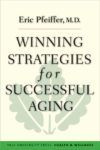 You want to leave your legacy: After Dr. Eric Pfeiffer retired from practicing medicine, Yale University Press published Winning Strategies for Successful Aging and Caregiving in Alzheimers and Other Dementias.
You want to leave your legacy: After Dr. Eric Pfeiffer retired from practicing medicine, Yale University Press published Winning Strategies for Successful Aging and Caregiving in Alzheimers and Other Dementias. You’re finally ready to leave your corporate job behind, take the entrepreneurial plunge and start that new business you’ve dreamt about for the past decade: Huibert Evekink co-authored Feedback First in order to launch a new company, Future Teaming, which provides work teams with empowering experiences that enhance communication skills and information flow. They are off to a powerful start with strong corporate sales and plans to launch a complementary online academy this year.
You’re finally ready to leave your corporate job behind, take the entrepreneurial plunge and start that new business you’ve dreamt about for the past decade: Huibert Evekink co-authored Feedback First in order to launch a new company, Future Teaming, which provides work teams with empowering experiences that enhance communication skills and information flow. They are off to a powerful start with strong corporate sales and plans to launch a complementary online academy this year. Admit it, you’ve always wanted to add “published author” to your bio. Or not, but, hey, doesn’t the phrase bring your confidence level up a few notches? What an accomplishment! Marla O’Brien, author of Wine Within Your Comfort Zone, called becoming a published author the third best thing that’s happened to her, next to 35 years of marriage, childbirth and a successful teaching career.
Admit it, you’ve always wanted to add “published author” to your bio. Or not, but, hey, doesn’t the phrase bring your confidence level up a few notches? What an accomplishment! Marla O’Brien, author of Wine Within Your Comfort Zone, called becoming a published author the third best thing that’s happened to her, next to 35 years of marriage, childbirth and a successful teaching career.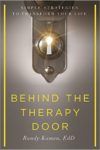 You feel called to work with high caliber leaders or change-agents and you know your book can provide the needed credibility to serve in such a capacity. Dr. Randy Kamen’s work teaching mindfulness to CEOs began after publishing Beyond the Therapy Door. Dr. Kamen recently told me, “I now reach a global audience of influential people.” Talk about making a difference. Think of all the employees who are benefiting now that mindfulness begins at the top of their companies.
You feel called to work with high caliber leaders or change-agents and you know your book can provide the needed credibility to serve in such a capacity. Dr. Randy Kamen’s work teaching mindfulness to CEOs began after publishing Beyond the Therapy Door. Dr. Kamen recently told me, “I now reach a global audience of influential people.” Talk about making a difference. Think of all the employees who are benefiting now that mindfulness begins at the top of their companies.- You know you could be helping and reaching so many more people with a book. It’s time to spread those wings, baby. Dr. Bruce Dow reached PTSD sufferers well beyond his private therapy practice with Dream Therapy for PTSD. And Chris Spurvey sold 8,000 copies of It’s Time to Sell in 3 weeks—just imagine how many people his book will help over time!
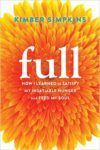 It’s time to tell your story. The Nautilus Awards committee agreed it was time for Kimber Simpkins—she won a Silver Nautilus for Full. So did Vint Virga, DVM, who told more than his own story. The Soul of All Living Creatures includes tales about dogs, cats, ocelots, wolves and other four leggeds who have sauntered, slunk and leapt into his life with their many wise lessons.
It’s time to tell your story. The Nautilus Awards committee agreed it was time for Kimber Simpkins—she won a Silver Nautilus for Full. So did Vint Virga, DVM, who told more than his own story. The Soul of All Living Creatures includes tales about dogs, cats, ocelots, wolves and other four leggeds who have sauntered, slunk and leapt into his life with their many wise lessons. The New York Times hasn’t called you yet. It happened for Martha Rhodes after she published 3,000 Pulses Later and to Cathy Turney when Laugh Your Way to Real Estate Sales Success won a Stevie Award for Best Business Book of the Year.
The New York Times hasn’t called you yet. It happened for Martha Rhodes after she published 3,000 Pulses Later and to Cathy Turney when Laugh Your Way to Real Estate Sales Success won a Stevie Award for Best Business Book of the Year.
- Your clients/customers/readers deserve this. Cara Bradley’s On the Verge helps yoga practitioners and others bring mindfulness to their everyday lives—and doesn’t everyone deserve to experience the power of living in the now?
- You love public speaking or teaching and you’d like to get paid—or paid more—for it. One published client recently told me she often gets paid in one day what she used to earn in a week as a psychotherapist.
 You’re ready to speak at prestigious national and international conferences—and influence your field at the next level. After Gus Ferrer, MD and Burke Lennihan, RN published Cough Cures, Dr. Gus has been in demand as a speaker for several prestigious national conferences.
You’re ready to speak at prestigious national and international conferences—and influence your field at the next level. After Gus Ferrer, MD and Burke Lennihan, RN published Cough Cures, Dr. Gus has been in demand as a speaker for several prestigious national conferences. You’d love an excuse to travel to Bermuda—all expenses paid plus a stipend—or maybe a tour of England and Wales. Yes, the former happened to Pat Hastings when she published Simply a Woman of Faith and Martha Rhodes was invited by the Brititsh Government for a speaking tour to help launch the rollout of TMS therapy to their healthcare system, after 3,000 Pulses Later was published.
You’d love an excuse to travel to Bermuda—all expenses paid plus a stipend—or maybe a tour of England and Wales. Yes, the former happened to Pat Hastings when she published Simply a Woman of Faith and Martha Rhodes was invited by the Brititsh Government for a speaking tour to help launch the rollout of TMS therapy to their healthcare system, after 3,000 Pulses Later was published.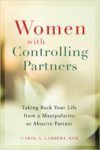 You want to empower people who are stuck and see no way out. That was one of Carol Labert’s goals in publishing Women with Controlling Partners. Her publisher, New Harbinger, was particularly excited to serve this under-served market.
You want to empower people who are stuck and see no way out. That was one of Carol Labert’s goals in publishing Women with Controlling Partners. Her publisher, New Harbinger, was particularly excited to serve this under-served market. Your book can help parents help their kids. Dr. Kathleen Trainor’s Calming Your Anxious Child is one great example of this. Her reach goes beyond the book as The Washington Post now regularly calls upon Dr. Trainor for advice for how to talk to kids about anxiety-provoking subjects in ways that help everyone stay calm.
Your book can help parents help their kids. Dr. Kathleen Trainor’s Calming Your Anxious Child is one great example of this. Her reach goes beyond the book as The Washington Post now regularly calls upon Dr. Trainor for advice for how to talk to kids about anxiety-provoking subjects in ways that help everyone stay calm.- You want to bring a light touch to a heavy subject. This was our goal with The Ultimate Guide to Tranforming Anger, the book I co-authored with Peaco Todd and Jane Middelton-Moz.
 You’re ready to bump up your presentations to keynotes. That was Dr. Michael Banov’s goal—and it worked after Sunrise River Press published Taking Antidepressants.
You’re ready to bump up your presentations to keynotes. That was Dr. Michael Banov’s goal—and it worked after Sunrise River Press published Taking Antidepressants.- You’d like to get more funding for your research: Dr. Michael Banov’s goal #2: achieved!
 You’ve identified your “ideal clients” and now you’d like to fill your practice with these “ideals.” Bridget Engel uses her book Guidance to Go to fill her coaching practice with clients who resonate with her work with angels, as well as to fill her retreats.
You’ve identified your “ideal clients” and now you’d like to fill your practice with these “ideals.” Bridget Engel uses her book Guidance to Go to fill her coaching practice with clients who resonate with her work with angels, as well as to fill her retreats. You want the perfect marketing tool that sells your services for you. Mike Travis’ Mastering the Art of Recruiting is a great example of this.
You want the perfect marketing tool that sells your services for you. Mike Travis’ Mastering the Art of Recruiting is a great example of this.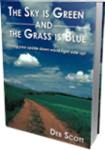 You’re an expert in your field, but also a well-kept secret. It’s time to let the secret out and shine your light a little brighter. Okay, a lot brighter. Deb Scott’s The Sky is Green and the Grass is Blue turned up the volume on Deb’s light—and led to hosting a top rated show on blog talk radio—with over a million global listeners.
You’re an expert in your field, but also a well-kept secret. It’s time to let the secret out and shine your light a little brighter. Okay, a lot brighter. Deb Scott’s The Sky is Green and the Grass is Blue turned up the volume on Deb’s light—and led to hosting a top rated show on blog talk radio—with over a million global listeners.- You have so much you’d like to say to Hoda. Abby Rodman, author of three books on marriage and divorce including Without This Ring, appeared on the Today Show twice.
 You want to stand out in a field that’s growing more competitive. In addition to being filled with super-useful tips for its readers, Success Without Stress showcases Teri Scheinzeit’s ability to help women entrepreneurs stay calm and “Work Smarter, Not Harder.” As a result, she’s been attracting more clients who are looking for success that comes without the high price of stress. As a coach who manages to take one day off a week, and one week off a month, for her passions (travel and making music), the book also helps attract clients who are eager to “design” a fulfilling, outside-the-box lifestyle.
You want to stand out in a field that’s growing more competitive. In addition to being filled with super-useful tips for its readers, Success Without Stress showcases Teri Scheinzeit’s ability to help women entrepreneurs stay calm and “Work Smarter, Not Harder.” As a result, she’s been attracting more clients who are looking for success that comes without the high price of stress. As a coach who manages to take one day off a week, and one week off a month, for her passions (travel and making music), the book also helps attract clients who are eager to “design” a fulfilling, outside-the-box lifestyle.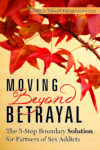 You have a major contribution to make to your field and a book is the perfect way to share it. Leslie Shapiro did that with Understanding OCD, published by ABC-CLIO, as does Vicki Tidwell Palmer’s Moving Beyond Betrayal.
You have a major contribution to make to your field and a book is the perfect way to share it. Leslie Shapiro did that with Understanding OCD, published by ABC-CLIO, as does Vicki Tidwell Palmer’s Moving Beyond Betrayal.- You just wanna make the world a better place. Kathy LeMay upped her contribution to philanthropy with The Generosity Plan, published by Beyond Words.
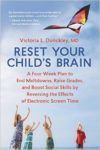 You want to raise awareness about a public health issue. Victoria Dunckley did that and more with Reset Your Child’s Brain, which brings to light the effects of electronic screen time on children’s brains and a proven plan to solve the problem.
You want to raise awareness about a public health issue. Victoria Dunckley did that and more with Reset Your Child’s Brain, which brings to light the effects of electronic screen time on children’s brains and a proven plan to solve the problem. You’d like to work with a new group of people. Dr. Carrie Barron’s The Creativity Cure helped her expand her teaching beyond the college level.
You’d like to work with a new group of people. Dr. Carrie Barron’s The Creativity Cure helped her expand her teaching beyond the college level.- You’ve been practicing signing your name in anticipation of your book signings. Your signature is perfected.
- You have knowledge in your field that can be applied outside your field—and you’re ready to share it. Dr. Patricia Hoy applies principles of the arts to everyday life in her book Arts Awareness.
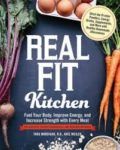 You see people being taken advantage of and you want to educate them so that doesn’t happen. Tara Mardigan and Kate Weiler’s Real Fit Kitchen helps athletes learn the mis-information about “health” foods being marketed to athletes and offers easy, healthy options for cooking on-to-go power foods for their competitions.
You see people being taken advantage of and you want to educate them so that doesn’t happen. Tara Mardigan and Kate Weiler’s Real Fit Kitchen helps athletes learn the mis-information about “health” foods being marketed to athletes and offers easy, healthy options for cooking on-to-go power foods for their competitions. You know just how to help people create the change in their lives that they are searching for. As former Executive Director of the T. Colin Campbell Foundation, Micaela Cook Karlsen knew just how people struggled with implementing a plant-based diet, and she’d done the research—and put it into practice—to know how to make plant-based eating a way of life—hence, A Plant-Based Life.
You know just how to help people create the change in their lives that they are searching for. As former Executive Director of the T. Colin Campbell Foundation, Micaela Cook Karlsen knew just how people struggled with implementing a plant-based diet, and she’d done the research—and put it into practice—to know how to make plant-based eating a way of life—hence, A Plant-Based Life.- People keep asking for your book and it feels kinda lame to say, “It’s coming” when you feel stalled. Imagine how great it will feel to say, “It’s here,” instead.
- You want to honor someone you love. In Bless Your Little Cotton Socks, Dr. Diane Radford honors the memory of her mother, whose quirky Scottish sayings and sense of humor pepper every page.
- You want to get to capture your family’s history before it’s too late. Pat Mitchell interviewed her mother, aunts and uncles to write A Girl From the Hill, about her mother’s life.
 You’ve solved a problem in your own life and now you want to help others solve theirs. Nora Hall wrote Survive Your Husband’s Retirement as the book she wished she’d had when her husband retired.
You’ve solved a problem in your own life and now you want to help others solve theirs. Nora Hall wrote Survive Your Husband’s Retirement as the book she wished she’d had when her husband retired.- Give your clients a “take home” to integrate whatever it is you teach them. Psychotherapist Stephanie O’Leary’s clients kept saying, “Your suggestions are amazing. You should really write a book!” They wanted something to help them practice what she taught them—during therapy sessions—about parenting.
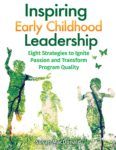 You want to shake up the status quo that has been in existence for far too long. Susan MacDonald’s Inspiring Early Childhood Leadership: Eight Strategies to Ignite Passion and Transform Program Quality, provides early childhood leaders with the strategies and insights that they need to develop empowering new ways to improve the quality of early childhood programs.
You want to shake up the status quo that has been in existence for far too long. Susan MacDonald’s Inspiring Early Childhood Leadership: Eight Strategies to Ignite Passion and Transform Program Quality, provides early childhood leaders with the strategies and insights that they need to develop empowering new ways to improve the quality of early childhood programs.
What are your reasons for writing a book? Anything I’ve missed? Share your comments here.

 You’ll Change People’s Lives: Gustavo Ferrer, MD, co-author with Burke Lenihan of
You’ll Change People’s Lives: Gustavo Ferrer, MD, co-author with Burke Lenihan of  You’ll Make a Name for Yourself: Karin Esterhammer was honored as Erma Bombeck Humor Writer of the Month by the
You’ll Make a Name for Yourself: Karin Esterhammer was honored as Erma Bombeck Humor Writer of the Month by the 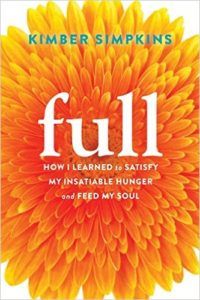 You’ll Get to Know Your Muse: As humans, we are naturally creative. As you write a book, you have the opportunity to deepen your connection to your creative source–what some people call “your muse.” That will help you with all kinds of things—from enjoying your life and relationships, to tapping into your creativity for business projects, to bringing more breadth to your writing and other activities. Kimber Simpkins strengthened that muscle in writing her Nautilus Award-Winning Memoir,
You’ll Get to Know Your Muse: As humans, we are naturally creative. As you write a book, you have the opportunity to deepen your connection to your creative source–what some people call “your muse.” That will help you with all kinds of things—from enjoying your life and relationships, to tapping into your creativity for business projects, to bringing more breadth to your writing and other activities. Kimber Simpkins strengthened that muscle in writing her Nautilus Award-Winning Memoir, 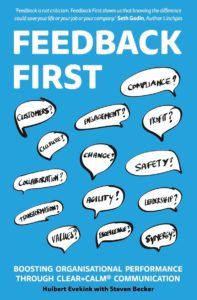 You’ll Gain the Confidence and Credentials to Take Risks and Go for Your Dreams: Becoming an author of an award winning book helped Huibert Evekink take the plunge, leave his executive position in a large multinational corporation and start his own business, using the book as a business building tool. “Writing and publishing
You’ll Gain the Confidence and Credentials to Take Risks and Go for Your Dreams: Becoming an author of an award winning book helped Huibert Evekink take the plunge, leave his executive position in a large multinational corporation and start his own business, using the book as a business building tool. “Writing and publishing  d transition into new roles. I am still surprised how much the book gave me!”
d transition into new roles. I am still surprised how much the book gave me!”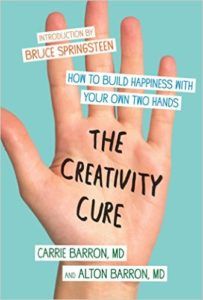 Carrie Barron, author of
Carrie Barron, author of 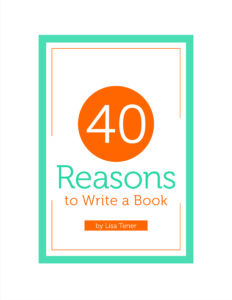
 In thinking about the upcoming holidays, I’ve put together a short list of meaningful gifts for folks on your Christmas, Hannukah or holiday list. All of these books will inspire. Some will entertain, some have the power to transform your friends and family into better leaders, and some will change people’s lives in ways they’ve longed for or dreamed of.
In thinking about the upcoming holidays, I’ve put together a short list of meaningful gifts for folks on your Christmas, Hannukah or holiday list. All of these books will inspire. Some will entertain, some have the power to transform your friends and family into better leaders, and some will change people’s lives in ways they’ve longed for or dreamed of. 1.
1.  2.
2.  3.
3.  4.
4.  5.
5. 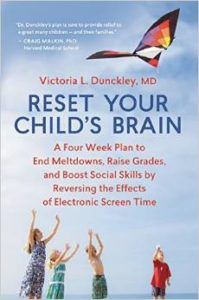 6.
6. 
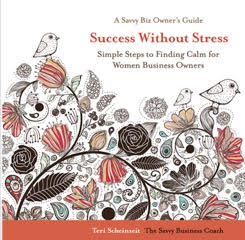 8.
8. 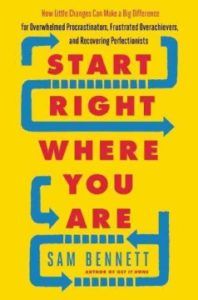 9.
9. 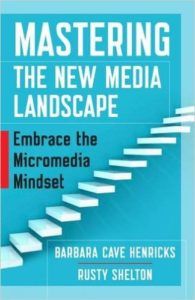 10.
10. 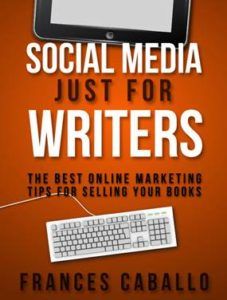 11. Social Media Just for Writers
11. Social Media Just for Writers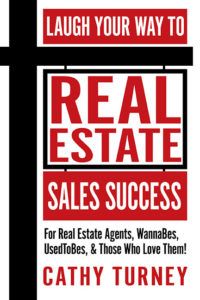 12.
12.  13.
13. 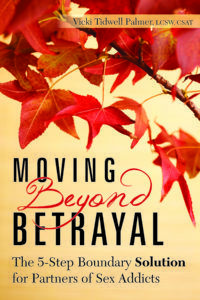
 15.
15. 16.
16. 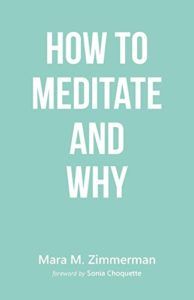 18.
18.  19.
19. 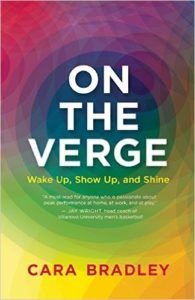 20.
20. 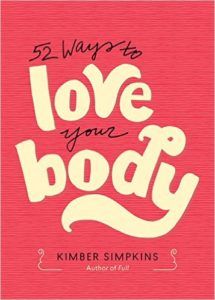 21.
21.  21.
21. 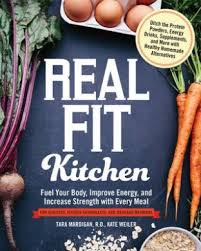 22.
22.  23.
23. 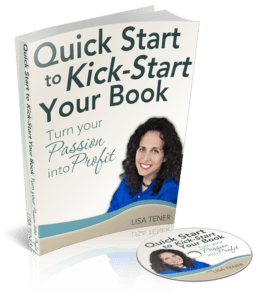 Your author friend will get clear on vision, goals, readership, features, tone, content and even structure. It’s only $97 and one of the most thoughtful presents you can give to someone who’s wanted to write a book forever.
Your author friend will get clear on vision, goals, readership, features, tone, content and even structure. It’s only $97 and one of the most thoughtful presents you can give to someone who’s wanted to write a book forever.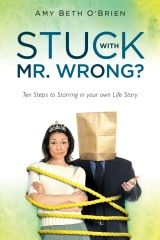

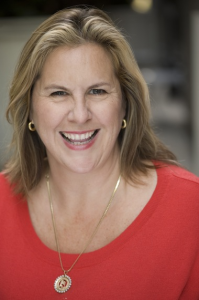
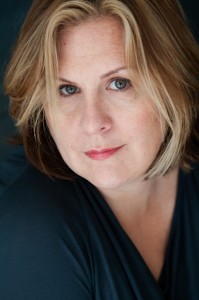 Sam:
Sam: